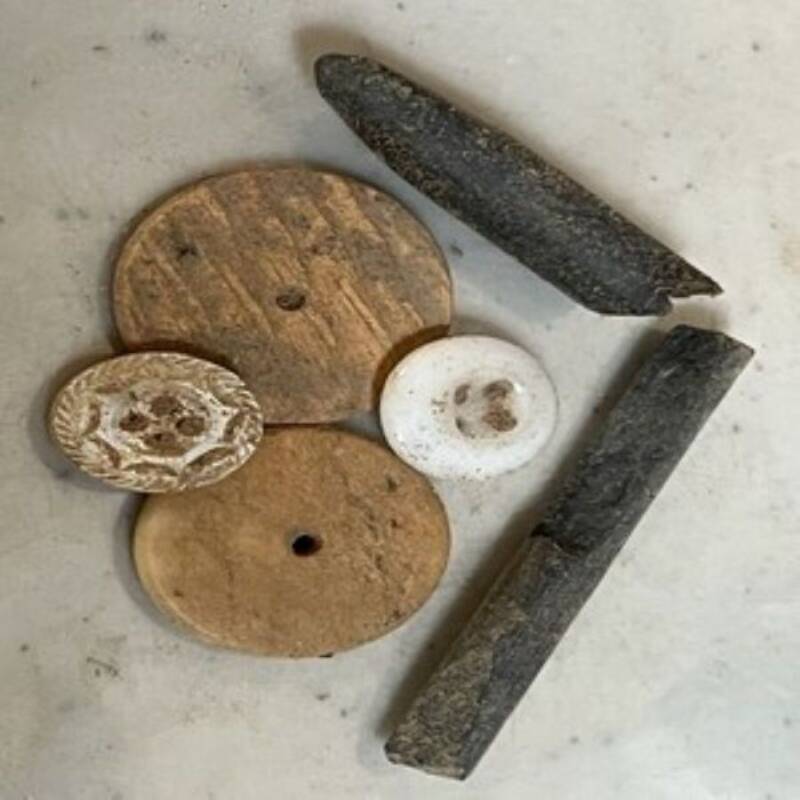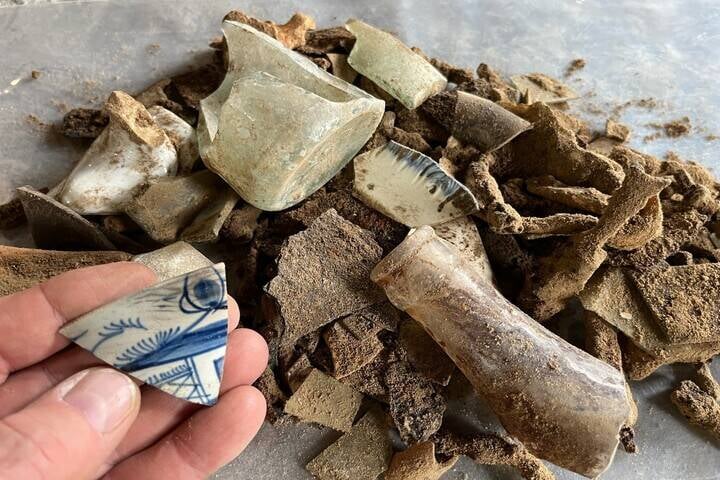The historic Williamsburg Bray School operated from 1760 to 1765 in Virginia and educated mostly enslaved students — encouraging them to accept enslavement as part of God's plan.

William & MaryArchaeologists found the foundation and cellar of Williamsburg Bray School on the William & Mary campus.
Archaeologists in Virginia have discovered the 18th-century foundation that once held the historic Williamsburg Bray School, the oldest known schoolhouse for Black children in America.
Unearthed at William & Mary University in Williamsburg, Virginia, the nearly intact foundation was found atop a cellar that housed many artifacts from the site’s time below a children’s schoolhouse and, later, a college dormitory.
The original schoolhouse building, sans its foundation, was recently moved to the Colonial Williamsburg Foundation in 2023 to be exhibited as part of the museum’s effort to expand their information on Black American history. And now, experts are able to learn more about the historic schoolhouse.
The History Of Williamsburg Bray School
The old schoolhouse, called Williamsburg Bray School, educated hundreds of Black children, most of whom were enslaved, from 1760 to 1765.
Despite the school rationalizing the institution of slavery by using religion, claiming the children’s enslavement was part of God’s plan, the Black students achieved literacy and thus walked away with more agency. The students could also share what they learned with their families.
“There was this need to proselytize and to bring salvation while still not doing anything to destabilize the institution of slavery,” Maureen Elgersman Lee, the director of William & Mary’s Bray School Lab, said of the schoolhouse’s history. “Save the soul, but continue to enslave the body.”
Following its time as a school, the building became a private home before becoming part of the growing William & Mary campus in the area.
The building would be expanded and would serve various purposes in the following years. It was eventually moved to make space for a dormitory. But from 1924 until 1930, the building itself served as a dormitory that housed some of the first women to get college educations in the United States.

William & MaryAlong with finding the 18th-century foundation of the building, archaeologists also uncovered a cellar full of artifacts.
The original structure of the building was identified and confirmed in 2021 using dendrochronology, a scientific method of examining tree rings to identify when the lumber had first been harvested.
Since being moved to the Colonial Williamsburg Foundation, the original school building has undergone restoration, and experts are working on identifying the descendants of the students who were once taught there.
Now, with the discovery of the building’s original foundation and cellar, there is even more that researchers can learn about the site’s history.
“The roots of our city and university entwine here,” said William & Mary’s president Katherine A. Rowe. “Every layer of history that it reveals gives us new insights into our early republic, from the Williamsburg Bray School through the generations that followed, up through the early 20th century.”
The Artifacts Uncovered In The Cellar Of The Historic Williamsburg Bray School

William & MaryButtons and slate pencil fragments were some of the 18th and 19th-century artifacts found at the site.
The college discovered the historic building’s original foundation and the cellar during a renovation of Gates Hall, the university building that currently stands at the site of the old schoolhouse’s initial location.
According to archaeologist Tom Higgins, the cellar was likely dug shortly after the foundation was laid, and it is not lined with bricks. Additionally, the 36-by-18-feet cellar potentially consisted of two different levels.
Within the cellar, archaeologists found numerous artifacts, dating from the 18th century, 19th century, and even the 20th century, including jewelry, fragments of slate pencils, and buttons.
Also among the recovered artifacts were handmade ceramics, likely originating from various enslavement sites and Indigenous groups.
The more modern artifacts likely originate from the building’s time as a dormitory for women in the 1920s. One object is a piece of glass with a depiction of the Roman goddess Minerva, a deity of wisdom, justice, and war.

William & MaryThe piece of glass featuring the Roman goddess Minerva.
“We know that the girls at Brown Hall were furnishing their dorms,” senior researcher Michele Brumfield said. “So maybe they were bringing in things like this.” That said, more research is needed to confirm this theory.
How The Story Of America’s Oldest Schoolhouse For Black Children Lives On

William & MaryArtifacts from the 19th and 20th centuries found at the site.
Following the discoveries, William & Mary University is planning to incorporate the schoolhouse’s history into the renovated Gates Hall.
A permanent exhibit about the Williamsburg Bray School will be co-curated with members of the Williamsburg Bray School Descendant Community and others. It will feature artifacts found in the newly discovered cellar.
There are also plans to outline the building’s original foundation along the floor of the hall. In addition, the college wants to excavate part of the foundation to be on display for the exhibit, if they’re able to do so.
Other artifacts found at the site will be sent to the Colonial Williamsburg Foundation to be included with related artifacts on display there.
“This is exciting,” Lee said. “What else are we about to learn? We are not done understanding the history of the Williamsburg Bray School, the history of Black education. We are not done learning the history of this area, and we are certainly not done learning the history of this country.”
After reading about the historic Williamsburg Bray School for Black children, learn about Harriet Jacobs, one of the first enslaved women to write an autobiography. Then, learn these little-known facts about Black history.





